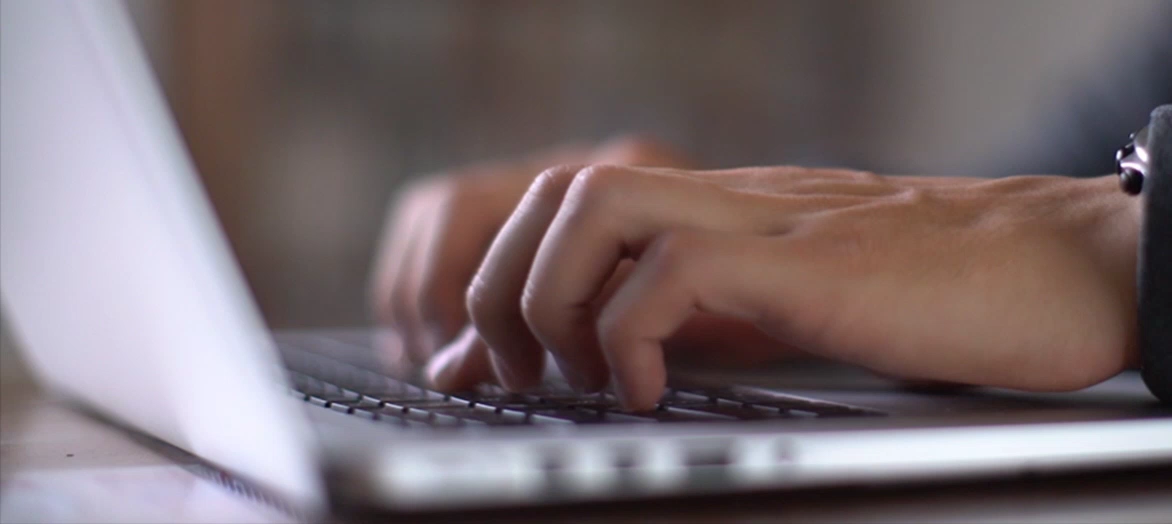
After typing the letter O return finger to resting position. Right hand, use your ring finger (L) to reach the letter O. After typing the letter E return finger to resting position. Left hand, use your right middle finger (D) to reach the letter E. After typing the letter H return finger to resting position. Right hand, use your index finger (J) to reach the letter H. To type the G letter use your index finger (left hand, F finger). To type the letter H use your index finger (right hand, J finger). Never use any other fingers to type these letters. If you lose control of your fingers slow down. Start each new lesson slowly gradually increase your speed. Stop after a lesson for a moment of relaxation. Don't stop if you make an error, just keep typing. You will soon have control over your fingers. Lesson #1 and #2 will teach finger position for the resting (home) keys. Left hand resting finger position (above) The letter on each finger on images, below is denoted the resting position of each finger. The resting position (home keys) is the position for each finger when not in use. To type the upper image of a key ("), press the key and at the same time with your other hand press the shift key with your pinky finger To type the lower image of a key ('), just depress the key. To start typing on a new line press the Enter key on your keyboard. The shift key is to the left of Z for the left hand and to the right of / for the right hand. To capitalize a letter press the letter and at the same time with your other hand press the shift key with your pinky finger. Press the space bar with thumb to add a space between letters and sentences. With practice your fingers respond and type the correct letter in respond to the sight of the letter. Think of the finger and key or keys it control. Do not bend your hand in awkward angles to type key combinations.Īfter striking a key, quickly retract your finger, turning the finger to rest on its resting position (home) key. Use both hands to type multiple combination key strikes.

If you feel your wrist touching the rest, you know that your wrists are starting to dip. A wrist rest of the proper height (level with the space bar) can also serve as a reminder to keep your wrists straight. You should NOT rest your wrists on a wrist rest except while taking a very short break from typing. There should not be any pressure on your wrists or forearms while you type. Your hand should be flat, and parallel to the keyboard, without twisting. Let your fingertips rest very highly on the center of each resting key, (see below for home keys). Relax at the end of each lesson if you need to. Start with short practice periods, such as 30 minutes a day, working up to longer periods of practice as you develop keyboard skills. Typing is a physical skill that requires practice, practice, and more practice. Develop your feel for the keys before trying to increase your speed.

Repeat each lesson until you feel comfortable with your control of the keys, before moving to the next lesson. Say the letter of each key as you type, either out loud or silently. If you need to verify the location of a key, look at the hands displayed on your monitor.


 0 kommentar(er)
0 kommentar(er)
